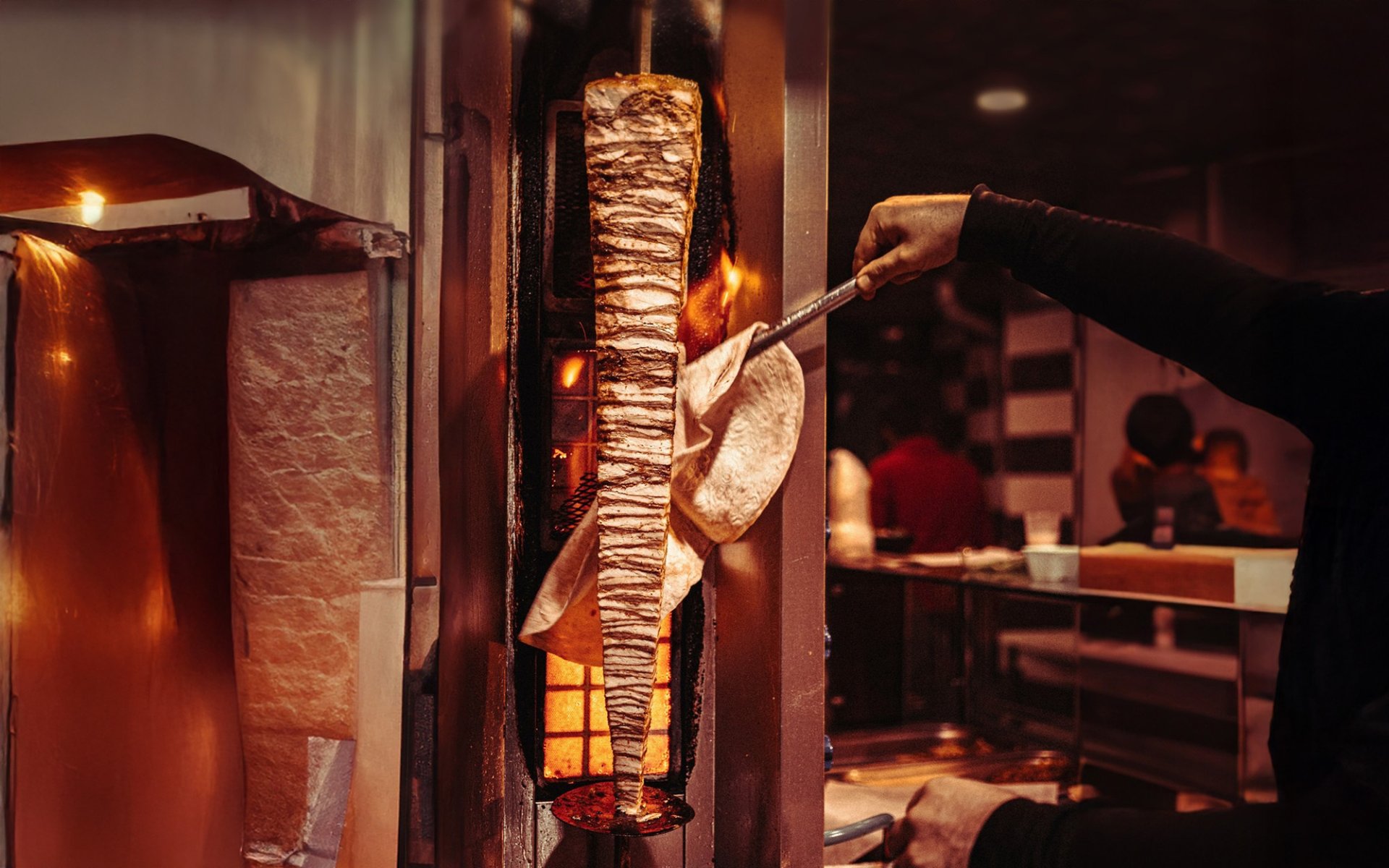Kebabs

When we talk about kebabs in our country, many people likely envision a dish wrapped in flatbread, filled with various meats and vegetables. However, many might not realize that kebabs actually come in various forms, both wrapped and skewered like a barbecue.
Origins and Etymology: From Hunting to Grilling
The origin of kebabs lies in the Middle East. Historians state that kebabs are considered one of the oldest forms of cooked food known to humanity, with their history dating back over 2,000 years. In their earliest form, kebabs consisted of meat skewered and roasted over an open fire, typically using beef, lamb, or goat meat obtained from hunted animals.
The word Kebabs is believed to originate from Old Persian, meaning to grill or to burn. This term denotes a cooking method involving skewering and grilling over an open flame, showcasing a simple yet effective culinary technique.
In ancient times, nomadic tribes frequently used this method for cooking because it required minimal equipment, was quick, and skewers were easily found in nature. They would cut meat into small, bite-sized pieces, season them with local spices and herbs, and alternate them on skewers with various vegetables like eggplant, tomatoes, potatoes, and onions, to enhance flavor and nutritional value.
Global Spread and Regional Adaptations: Flourishing Diversity
Over time, Middle Eastern culinary culture began to spread along trade routes, through invasions, and with the expansion of empires. This exposed kebabs to various regions, where they were adapted to local tastes and integrated with readily available local ingredients. This led to the diverse range of kebabs we see today, becoming an example of "cultural fusion" through food.
In Persia (modern-day Iran): There is a kebab called Shish Kebab, which is a skewered kebab similar to the earliest form. However, it incorporates a wider variety of meats, such as pork, chicken, and turkey, mixed with new herbs and spices, resulting in a more diverse range of flavors and textures, reflecting the sophistication of Persian cuisine.
In India: Kebabs underwent another adaptation, with a popular version known as Seekh Kebab. This is made from minced or ground meat blended with aromatic Indian spices and herbs, then molded into long shapes and skewered. This form of kebab remains widely popular in India today and can be enjoyed in various ways, such as a Seekh Kebab roll wrapped in Paratha bread, making it an easy-to-find and satisfying meal.
In Turkey: The Doner Kebab is a form that many people, especially in Thailand, are familiar with. It's made from seasoned meat, typically chicken, lamb, or beef, stacked on a vertical rotisserie and slowly cooked. The meat is thinly sliced from the rotating spit and then wrapped in thin flatbreads like Lavash or Filo, along with various vegetables such as lettuce, onions, and tomatoes, and drizzled with tomato sauce or mayonnaise, making it a popular fast food item.
In Greece: There is a kebab called Souvlaki, which consists of skewered meat, primarily pork or chicken (originally often lamb). It is typically served with Pita Bread and Tzatziki sauce (a yogurt sauce with cucumber and garlic), becoming a very popular street food.
Kebabs Today: A Global Phenomenon and Endless Evolution
The global spread of kebabs is a result of people migrating from the Middle East to settle in different parts of the world. They brought their culinary traditions, including the art of making kebabs, with them. This allowed kebabs to integrate into various cultures, becoming a widely accepted and beloved dish among diverse nationalities.
Today, kebabs have become a global phenomenon, and their versatility has led to countless adaptations and developments to cater to diverse dietary needs. Options now include vegetarian and vegan choices, such as Falafel (fried chickpea balls) and vegetable skewers, which are gaining popularity. This illustrates the continuous evolution of kebabs, adapting to modern times and global consumer demands, making kebabs not just food, but a symbol of ongoing cultural fusion.


